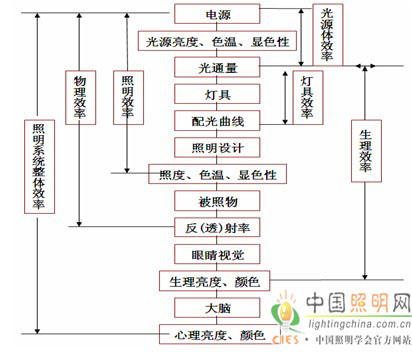Energy and the environment are the two major themes of the current society. Semiconductor lighting is an important way to solve energy conservation and environmental problems. LED technology and industry development is much faster than people expected, and some of the optical properties of LEDs are unmatched by any artificial light source, such as rich color, high color saturation, wide color gamut, concentrated beam, fast response, Digital control and adjustment, etc. The application of these new features will change the experience and habits of people's traditional lighting, trigger the transformation of lighting concepts and light culture, LED is undoubtedly the charm of green lighting.
Due to the wide application of LEDs, some deep-seated problems have emerged in the implementation of the green lighting concept. We have listed some of the more acute problems and hoped to identify the right and wrong through the way of blooming and arguing to promote the healthy development of green lighting projects and semiconductor lighting projects. There are some inconveniences, welcome to enlighten me.
1. There are essential differences between radiometry, photometry and colorimetry.
Radiometry, photometry, and colorimetry are the foundations of modern optics and light engineering. Their essential difference is that radiosity is the science of studying the energy measurement of electromagnetic radiation, and it is the objective physical quantity that describes the radiant energy in energy units. Photometry and colorimetry are the subjective quantities related to the visual physiology of the human eye and the surrounding environment. They are attempts to describe the measurement, measurement and expression of electromagnetic waves that can be perceived by the human eye using physical scientific methods. It is related to many factors such as human visual physiology, psychology, tradition, habit, region, lighting conditions and observation conditions. Because of the lack of understanding of the essential differences between the three degrees of study, there is a lot of confusion. I hope to reach a consensus through discussion.
1.1 Luminous intensity
Luminous intensity is one of the seven basic units of measurement in the International System of Units. The correct definition of luminous intensity is: monochromatic radiation with a luminous frequency of 540 × 1012 Hz (corresponding to the wavelength of light at 555 nm in air), and the radiation intensity in a given direction is ( When 1/683) w/sr, the luminous intensity of the light source in this direction is defined as 1 Candela (referred to as cd). This is the definition of the objective physical quantity quoted in photometry. If luminous flux is used to indicate that the luminous intensity is the subjective quantity, the luminous flux lumen is the amount related to the spectral efficiency of the human eye.
1.2 The energy efficiency standard for lighting is subjective, not objective physical quantity.
Most of them now use the single technical indicators of luminous efficiency (Lm/W) to express the advanced nature of LEDs. It is unscientific to use only luminous efficiency to indicate the energy efficiency of LEDs. Since the human eye has different sensitivities to different spectral radiations, the efficiency of illumination is actually a very complex system efficiency, as shown in Figure 1.
Due to the wide application of LEDs, some deep-seated problems have emerged in the implementation of the green lighting concept. We have listed some of the more acute problems and hoped to identify the right and wrong through the way of blooming and arguing to promote the healthy development of green lighting projects and semiconductor lighting projects. There are some inconveniences, welcome to enlighten me.
1. There are essential differences between radiometry, photometry and colorimetry.
Radiometry, photometry, and colorimetry are the foundations of modern optics and light engineering. Their essential difference is that radiosity is the science of studying the energy measurement of electromagnetic radiation, and it is the objective physical quantity that describes the radiant energy in energy units. Photometry and colorimetry are the subjective quantities related to the visual physiology of the human eye and the surrounding environment. They are attempts to describe the measurement, measurement and expression of electromagnetic waves that can be perceived by the human eye using physical scientific methods. It is related to many factors such as human visual physiology, psychology, tradition, habit, region, lighting conditions and observation conditions. Because of the lack of understanding of the essential differences between the three degrees of study, there is a lot of confusion. I hope to reach a consensus through discussion.
1.1 Luminous intensity
Luminous intensity is one of the seven basic units of measurement in the International System of Units. The correct definition of luminous intensity is: monochromatic radiation with a luminous frequency of 540 × 1012 Hz (corresponding to the wavelength of light at 555 nm in air), and the radiation intensity in a given direction is ( When 1/683) w/sr, the luminous intensity of the light source in this direction is defined as 1 Candela (referred to as cd). This is the definition of the objective physical quantity quoted in photometry. If luminous flux is used to indicate that the luminous intensity is the subjective quantity, the luminous flux lumen is the amount related to the spectral efficiency of the human eye.
1.2 The energy efficiency standard for lighting is subjective, not objective physical quantity.
Most of them now use the single technical indicators of luminous efficiency (Lm/W) to express the advanced nature of LEDs. It is unscientific to use only luminous efficiency to indicate the energy efficiency of LEDs. Since the human eye has different sensitivities to different spectral radiations, the efficiency of illumination is actually a very complex system efficiency, as shown in Figure 1.

Figure 1. Efficiency of lighting